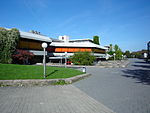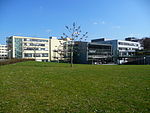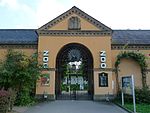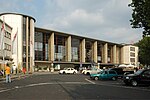Heidelberg University Faculty of Biosciences
Baden-Württemberg building and structure stubsGermany university stubsHeidelberg University
The Faculty of Biosciences is one of twelve faculties at the University of Heidelberg. It comprises the Institute of Zoology, the Institute for Plant Science, the Neurobiology, and the Institute of Pharmacy and Molecular Biotechnology. The Faculty has around 2,000 students taught and assisted by about 70 professors, 40 lecturers and 300 scientific support personnel.
Excerpt from the Wikipedia article Heidelberg University Faculty of Biosciences (License: CC BY-SA 3.0, Authors).Heidelberg University Faculty of Biosciences
Angelweg, Heidelberg Handschuhsheim (Handschuhsheim)
Geographical coordinates (GPS) Address Nearby Places Show on map
Geographical coordinates (GPS)
| Latitude | Longitude |
|---|---|
| N 49.4187833 ° | E 8.6722463 ° |
Address
Universität Heidelberg
Angelweg
69121 Heidelberg, Handschuhsheim (Handschuhsheim)
Baden-Württemberg, Germany
Open on Google Maps









